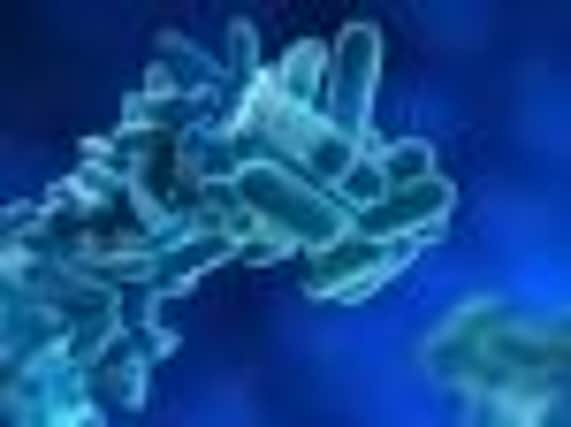Suspected Legionnaire’s cases in Edinburgh rise to ten


In addition to the confirmed cases, there were four suspected cases of the disease in Edinburgh last night, health bosses confirmed.
Public health officials have tested 16 cooling towers on four sites in the Gorgie, Dalry, Saughton areas, after discovering the cases can all be traced to one geographical area.
Advertisement
Hide AdAdvertisement
Hide AdAll ten people – eight men and two women – are believed to live or work in south-west Edinburgh.
Duncan McCormack, a public health consultant who is leading the investigation for NHS Lothian, said: “We are taking it very seriously.
“All ten of the people affected are seriously ill and are all being treated in intensive care or high-dependency units.”
Legionnaire’s disease is caused by breathing in minute droplets that are contaminated with the legionella bacterium.
Often an outbreak is connected with a particular swimming pool, or the central heating system in one building.
However, sometimes outbreaks have been caused by contamination spreading from factory cooling towers.
Legionnella bacteria can travel up to six miles through the air.
Mr McCormack said: “What we have found is that all of these cases live in the south-west central area of Edinburgh – roughly in Gorgie, Saughton and Dalry. We think there could be an environmental source.”
Advertisement
Hide AdAdvertisement
Hide AdWhen the number of cases and the geographic link became clear, environmental health officers from the council began investigating water cooling towers in the affected area.
Samples have been taken from the towers, which will be analysed and compared with samples of the bacteria taken from the people ill in hospital to see if the strain of legionella bacterium can be matched to the outbreak.
All 16 cooling towers have been rinsed with a “shock dose” of chlorine, which may have been enough to kill the bacteria at source. If a particular site is found to have been the source of the outbreak, it will be subject to further cleaning.
Investigators from the Health and Safety Executive (HSE) will be on site this week. A spokesman said: “HSE is aware and making initial inquiries.”
Colin Sibbald, environmental health manager for the Edinburgh city council, said anyone who developed symptoms of the disease should contact NHS 24 or their GP.
“We would urge people to look out for the symptoms of this disease,” Mr Sibbald said.
He added that the council had been working with NHS Lothian to find the source of the outbreak. Two potential sites were investigated on Sunday and two more were examined yesterday.
“It was quickly established that the known or suspected cases were connected geographically. It was identified that the potential source was most likely from some form of wet cooling tower connected to air conditioning systems or processes.
Advertisement
Hide AdAdvertisement
Hide Ad“Environmental health officers identified two premises in the west of the city that had these cooling towers,” he said.
“Two further premises have been identified. Those responsible for the maintenance of the cooling towers have been advised to carry out additional chemical treatment.”
In 1994, an outbreak of Legionnaire’s disease was suspected to have come from the Burton’s biscuit factory in Sighthill, west Edinburgh – outside the area where the latest source is likely to be found.